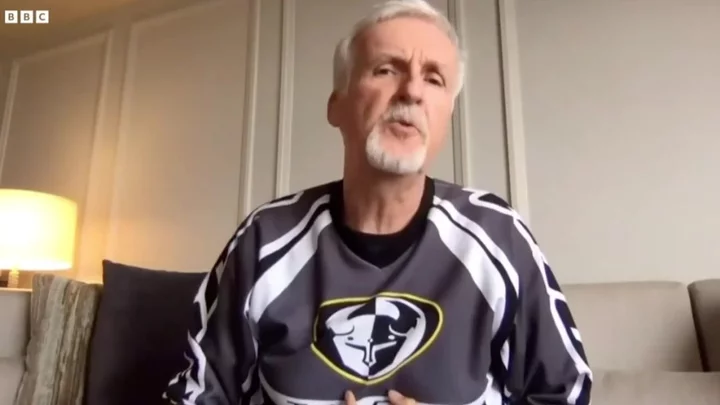
Inside Titanic director James Cameron's obsession with the deep ocean
Public interest in the deep ocean went into a frenzy this week as the search for the doomed Titan submarine played out – and Oscar-winning film director has made no secret of the fact that he is obsessed with the subject. Since it emerged on 22 June that the Titan was destroyed in what US authorities called a “catastrophic implosion”, Cameron has been telling media outlets that he knew what the five-man crew’s fate was since Monday, four days earlier. After calling up his “contacts in the deep submersible community” Cameron said he had already ascertained that the vessel had been destroyed in an implosion. “I felt in my bones what had happened.” Sign up to our free Indy100 weekly newsletter But why does Cameron know so much about the ocean depths? Titanic, Avatar and The Abyss First of all, Cameron has made a lot of films about the bottom of the sea. His 1997 film, Titanic, won 11 Oscars and was the first movie to earn more than $1bn worldwide, and Cameron went deep on his research – literally. The filmmaker has visited the real-life wreck of the Titanic 33 times, making his first trip in 1995 to shoot footage for the film. One of those dives even involved getting trapped with the wreck for 16 hours, with currents of water holding the director’s submarine at the bottom of the ocean. He has even written a book about his experiences, Exploring The Deep, which includes details of his dive journey, photos and maps from his own explorations of the wreck. He told ABC News: “I actually calculated [that] I've spent more time on the ship than the captain did back in the day.” Long before Titanic, Cameron directed The Abyss in 1989. The premise of the film is that an American submarine sinks in the Caribbean – sound familiar? That prompts a search and recovery team to race against Soviet vessels to recover the boat. Meanwhile, the last movie in Cameron’s famous Avatar franchise, The Way of Water, is set on the aquatic ecosystems of a world 25 trillion miles from Earth. "Some people think of me as a Hollywood guy … (but) I make 'Avatar' to make money to do explorations," Cameron told The Telegraph. Going even deeper In 2012, Cameron went a step further, plunging nearly 11km down to the deepest place in the ocean, the Mariana Trench in the western Pacific. The filmmaker made the solo descent in a submarine called the Deepsea Challenger, and it took more than two hours to reach the bottom. The submarine he used was years in the making, designed by Cameron himself with a team of engineers. The trip was only the second manned expedition to the Mariana Trench. The first was in 1960, when US Navy Lieutenant Don Walsh and Swiss scientist Jacques Piccard descended to the ocean floor. “It was absolutely the most remote, isolated place on the planet,” Cameron said in a later interview. “I really feel like in one day I've been to another planet and come back.” He was even underwater when 9/11 happened His obsession with the ocean goes back to age 17, he told the New York Times, when he learned to scuba dive, when he said he felt like he had discovered the "keys to another world”. And between making Titanic in 1997 and Avatar in 2009 Cameron didn’t make a feature film. But he did make documentaries about sea exploration. One of those, 2003’s Ghosts of the Abyss, showed Cameron's travels to the Titanic, while the other, 2005’s Aliens of the Deep, saw Cameron team up with NASA scientists to explore the sea creatures of mid-ocean ridges. Cameron’s fascination even meant he was inside a submersible vessel exploring the Titanic on 11 September 2001, when terrorists flew two passenger jets into the World Trade Centre. It was only after the now-68-year-old director and his crew finished their expedition and returned to the main ship that Cameron learned what had happened. “What is this thing that’s going on?” Cameron asked the late actor Bill Paxton, who played treasure hunter Brock Lovett in the film. “The worst terrorist attack in history, Jim,” Paxton said. Cameron realised he “was presumably the last man in the Western Hemisphere to learn about what had happened,” he told Spiegel in 2012. Have your say in our news democracy. Click the upvote icon at the top of the page to help raise this article through the indy100 rankings.
2023-06-23 20:29

Bar Fight: When ‘Cheers’ Robots Took Over for the Actors
Animatronic versions of bar patrons Norm and Cliff made two actors named George and John very unhappy.
2023-08-11 04:58

Fact check: Ron DeSantis on Amanda Gorman poem being pulled from a Florida elementary school library
Florida Gov. Ron DeSantis said Friday that he "had nothing to do with" a poem recently being moved from an elementary school library to a middle school library.
2023-05-31 08:30
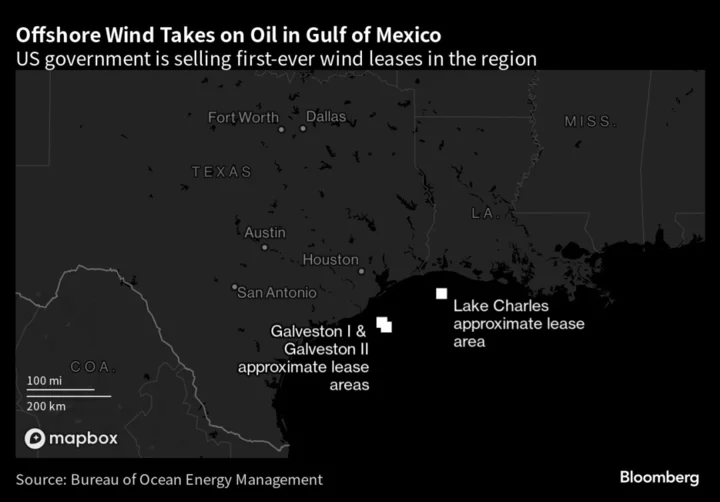
US Bets on Offshore Wind Boom in Oil-Rich Gulf of Mexico
The Gulf of Mexico has been a hub for US oil production for decades. A government auction Tuesday
2023-08-29 00:26

Adin Ross warns HasanAbi of legal battle amid ongoing feud: 'I'll see you in court'
Here's the latest update regarding the ongoing feud between Adin Ross and HasanAbi
2023-05-12 18:21
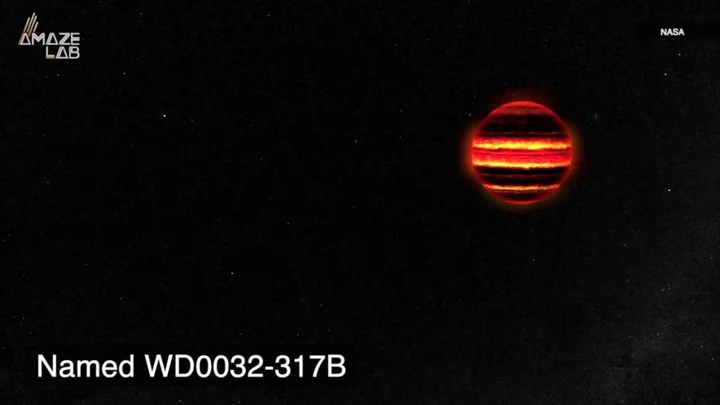
Astronomers have just discovered the most dazzling planet in the universe
Astronomers have just found out what planet in the universe is most dazzling and it is probably one you have never heard of. Looking at how much planet's clouds reflect sunlight back into space, astronomers have found a planet called exoplanet LTT9779b which reflects 80 per cent of the starlight it receives, making it the shiniest known planet in the universe. LTT9779b is slightly heavier and slightly larger than Neptune, and it is reflective because of the metallic glassy clouds that make up its atmosphere. Sign up to our free Indy100 weekly newsletter “Imagine a burning world, close to its star, with heavy clouds of metals floating aloft, raining down titanium droplets,” co-author James Jenkins, an astronomer at Diego Portales University and CATA (Santiago, Chile), said in a statement. Vivien Parmentier, a researcher at the Observatory of Côte d’Azur (France) and co-author of the study added: "LTT9779 b can form metallic clouds despite being so hot because the atmosphere is oversaturated with silicate and metal vapours.” So there you have it. Shame it doesn't have a very catchy name. Have your say in our news democracy. Click the upvote icon at the top of the page to help raise this article through the indy100 rankings.
2023-07-11 18:50

7 of the Best Cat Litter Boxes, According to Experts
Whether you’re shopping for senior cats or looking for an automatic model, the best cat litter boxes can improve the quality of life for you and your favorite feline.
2023-08-23 02:16
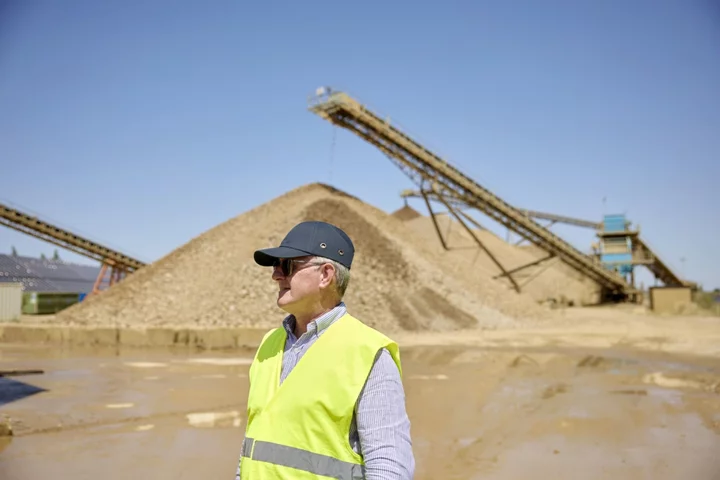
A River at Europe’s Heart Gives a Climate Solution to Riled Farmers
As the river Meuse winds its way from France toward Netherlands, it cuts through an eastern Belgian province
2023-07-12 11:55

How to Get Lara Croft in Warzone
Fans can get Lara Croft in Warzone by purchasing her Operator Bundle when it goes live in the store, likely in Warzone Season 5 Reloaded.
2023-08-25 03:21

JLR taps Everstream Analytics' AI to dodge supply chain problems
By Nick Carey LONDON JLR said on Monday it has partnered with supply chain mapping and risk analytics
2023-06-19 07:17

KKR, CDP rival consortium submits new bids for Telecom Italia's grid
Italy's biggest telecoms company Telecom Italia (TIM) said on Friday it received two new offers for its landline
2023-06-10 04:47

Antonio Brown joins Dillon Danis in trolling Logan Paul, intensifying ongoing feud involving Maverick’s girlfriend Nina Agdal: 'I got next champ'
Antonio Brown has never been one to back down, whether it be on social media or in real life, so his decision to delete his posts on X was unexpected
2023-08-25 17:29
You Might Like...

Flatiron Health Announces New Partnership in the UK

Post founder Noam Bardin is on a mission to reinvent social media and break Big Tech’s destructive dominance

Aussie telecom firms Telstra, TPG will not appeal block of asset transfer deal

'Queen of pop' Addison Rae thrills fans by dropping much-awaited 'Lost Album' tracks: 'I Got it bad is coming'

Starlink can now be used on the move ‘almost everywhere on earth’

Toyota: Data on more than 2 million vehicles in Japan were at risk in decade-long breach

How Many Endings Are There in Armored Core 6?
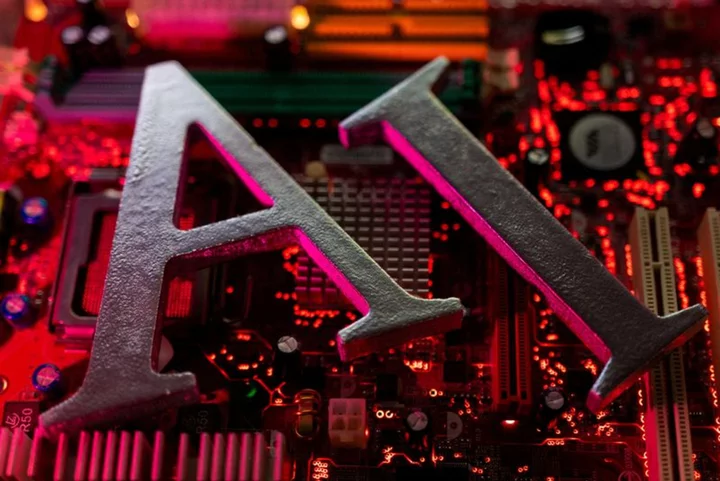
South Korean AI chip intellectual property startup valued at $81.4 million
